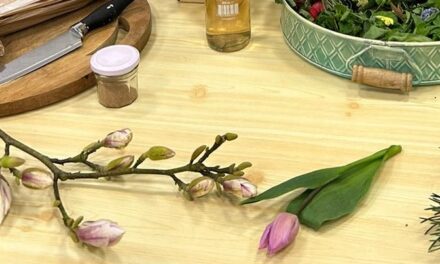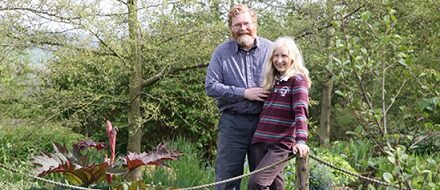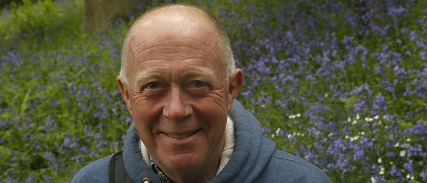Five Centuries of Women Gardeners and Gardens
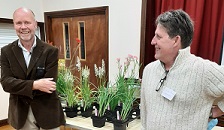 On 26 October Orleton and District Gardening Club welcomed Richard Rallings (left) of Mynd Hardy Plants in the Corvedale as its guest speaker on the topic of five centuries of women
On 26 October Orleton and District Gardening Club welcomed Richard Rallings (left) of Mynd Hardy Plants in the Corvedale as its guest speaker on the topic of five centuries of women
and gardens.
Richard’s wide ranging talk covered the early C17 to the present day and his subjects
included garden designers, authors, biologists, painters and flower arrangers, some well
known, others less familiar. All have been a major influence on gardeners past and present.
He started by discussing Mary, Duchess of Beaufort, 1630 to 1715, who while her husband
was at Court, managed the estate and developed the gardens of Badminton House,
Gloucestershire and Beaufort House, London with avenues and walled enclosures. A leader
in the formal style she was heavily influenced by the gardens of France and Italy. A botanist,
artist, gardener and plant collector she sent ships throughout the known world and we have
her to thank for the introduction of such favourites as pelargonium, ageratum and
passionflower as well as exquisite flower paintings.
Celia Fiennes, 1662 – 1741, a diarist and traveller, travelled each county of England on
horseback, often alone and wrote accounts of these expeditions including detailed
descriptions of gardens visited as a diary published after her death.
 Princess Augusta of Saxe Coburg, 1719 – 1772, together with her husband, Frederick, was
Princess Augusta of Saxe Coburg, 1719 – 1772, together with her husband, Frederick, was
responsible for the development of Kew Gardens and the construction of the Pagoda and
Aviary. By 1771 the design of the gardens reflected the movement away from the formal
towards the landscape style as exemplified by Capability Brown.
Marianne North, 1830 -1890, is commemorated by a gallery of 800 paintings at Kew. A
biologist and botanical artist she travelled all over the world illustrating not only the flora
but the way of life in those countries she visited.
Gertrude Jekyll, 1843 – 1932, needed no introduction. An artist who became a garden
designer in her forties due to failing eyesight together with William Robinson she
encouraged a movement away from Victorian carpet bedding to a more informal, relaxed
approach. Jekyll’s designs are characterised by drifts and patterns using plants as focal
points with contrasting heights and harmonious colours. Collaborating with the architect,
Edwin Lutyens, she is responsible for the design of gardens such as her own Munstead
Wood and Hestercombe in Somerset.
Jekyll considered Ellen Willmott, 1858 – 1934, to be the “greatest of all women gardeners”.
Inheriting a vast fortune she lived at Warley Place in Essex where she employed over 100
gardeners and paid plant hunters such as Ernest Wilson to import plants. She spent her
fortune on her gardens in Essex, France and Italy and died in penury – a cautionary tale for
those of us prone to impulse buys in the garden centre.
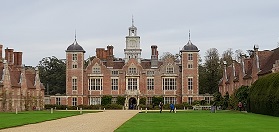 Norah Lindsay, 1873 – 1948, was a socialite and garden designer who propounded the
Norah Lindsay, 1873 – 1948, was a socialite and garden designer who propounded the
theory that every garden should be a continuation of the house it surrounds. She was paid a
retainer to oversee plant collecting and planting and worked at Hidcote, Chirk Castle,
Cliveden, Blickling Hall (Pictured) and Kelmarsh Hall.
Vita Sackville West, 1892 – 1962, designer, novelist and poet wrote gardening books and
together with her husband, Harold Nicolson, designed and planted Sissinghurst.
Time precluded Richard from giving the many recent women gardeners who have
influenced the gardening world more than a brief mention. These include the flower
arranger, Constance Spry, Beatrice Havergall who established the first school for lady
gardeners, the landscape architect Sylvia Crowe, Bunny Guiness, Dame Elizabeth Banks and
Katherine Swift.
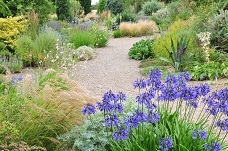 Perhaps pre-eminent among these is Beth Chatto, author, garden designer and
Perhaps pre-eminent among these is Beth Chatto, author, garden designer and
plantswoman whose principle of only using plants which are suitable to the conditions in which they will be grown is arguably the most important advice a gardener may receive.
Richard concluded his talk by reminding us of Beth’s comforting maxim – that of not wasting
energy on worrying about what cannot be done tomorrow but reserving one’s energy for
what can be achieved today.
Ghislaine Arundale

